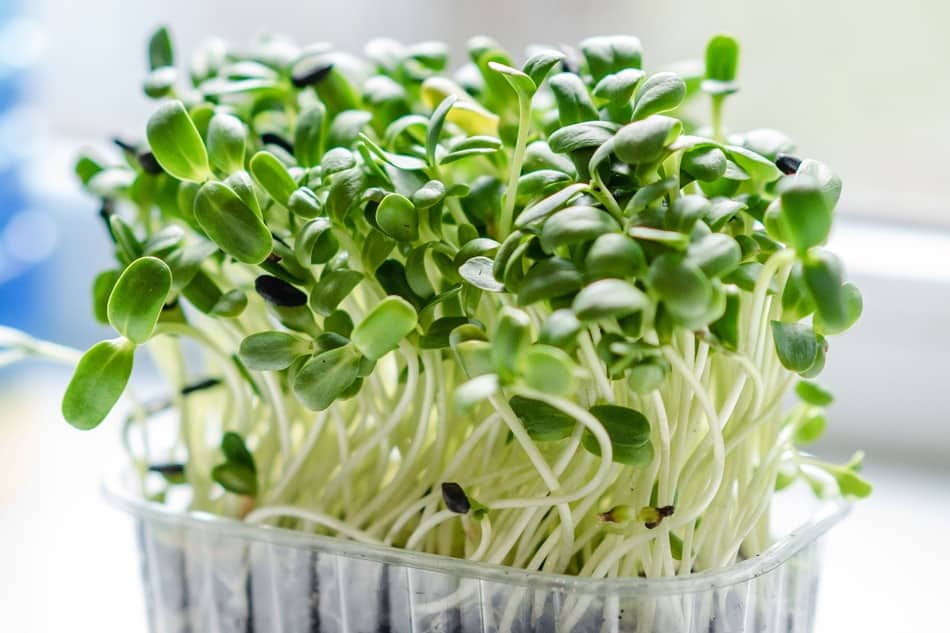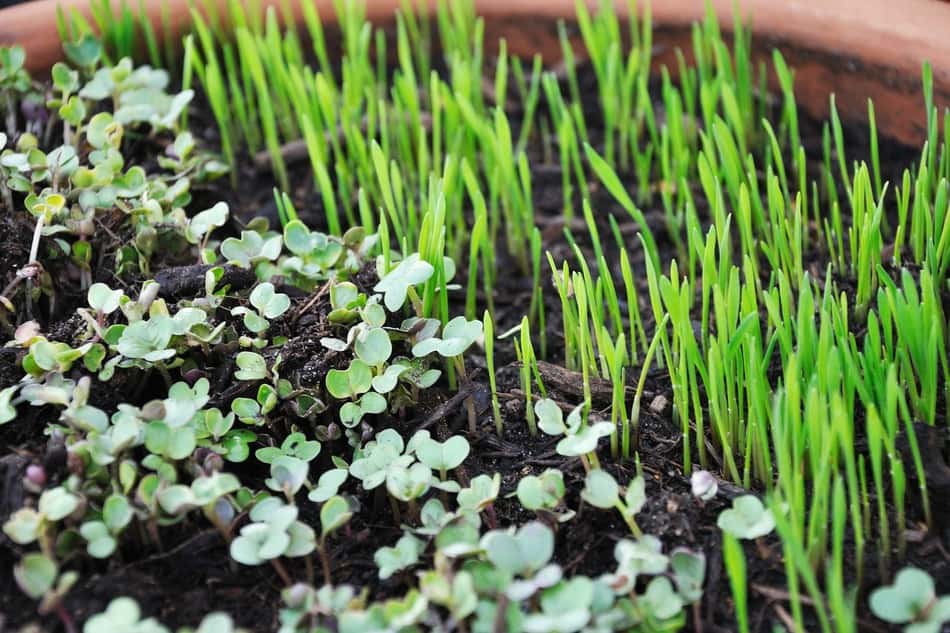From far away, microgreens and sprouts look like apples and tomatoes, but when you look at them more closely, they are almost the same.
Microgreens and sprouts are both young, edible plants. Microgreens are typically harvested when they are just a few inches tall, while sprouts are usually harvested when they are about an inch tall. Both microgreens and sprouts can be eaten raw or cooked. Microgreens are typically grown in soil, while sprouts are typically grown in water.
What Are Microgreens?

As their name says, microgreens are young plants. They get better food than their adult counterparts. Microgreens became popular because of cooking shows and high-end restaurants, but now you can buy them in grocery stores and even grow them on your windowsill.
Most microgreens are grown from vegetables like beets, radishes, broccoli, and others. They give your dishes flavor and color and give them a unique twist. Microgreens can be grown from almost any vegetable or herb. Microgreens can also be eaten by rabbits and other small animals.
What Are Sprouts?

Sprouts are new plants that grow from seeds that have started to grow. They are grown in water alone in a hydroponic system. Sprouts have a lot of good nutrients and are low in calories, they are usually grown in water, where they grow quickly and can be picked in two to six days and they have been a healthy food staple for many years. Sprouts were once a big part of raw food diets because they were so healthy.
The Growth Period Of Microgreens Vs Sprouts
The length of time needed to grow is a big difference between microgreens and sprouts. Most sprouts are grown for three to five days before they can be picked, but some are grown for an extra six to seven days.
Most microgreens are ready to eat after seven to fourteen days. For a stronger taste, some farmers like to grow them for up to twenty-five days, or until the first set of true leaves grows. Especially herb-like varieties, like lovage and oregano, tend to grow slowly.
If you take care of your plant for longer, it will produce baby greens, which usually take three to four weeks to grow. Baby greens are more of a leafy vegetable in the end.
The Length Of Microgreens Vs Sprouts
The length of the microgreen depends on its species, how long it takes to grow, and how it is grown. Generally, microgreens grow up to seven inches while sprouts grow up to three inches only
If you kept microgreens in the blackout dome for a long time, the seedlings would find their way to the light. This will make the shoots longer and thinner.
Growing Media Of Microgreens Vs Sprouts
Sprouts don’t need any extra nutrients to grow. Instead, it gets the nutrients it needs to grow from the endosperm. Water is the only thing that is still needed. Because of this, hydroponic media are better. People often use paper towels or even Mason jars to grow sprouts.
But microgreens need more nutrients in the soil to grow well. The soil method, which uses potting mix mixed with peat moss or coconut coir, is then preferred (see the comparison of soil vs growing mats). You can still grow them hydroponically, like with a growing mat, but you must also give them a nutrient solution.
Growing Conditions And Risk Concerns
Sprouts are usually grown in a damp, dark, and poorly ventilated place where bacteria and fungi can also grow. Because of this, sprouts should not be eaten raw. In the last article, we talked about how eating raw sprouts have been linked to many cases of foodborne illnesses.
Because the environment for microgreens need good lighting , well-ventilated, and moist but not soggy, there are fewer health concerns associated with consuming them. Raw consumption is preferred by some individuals. However, before being served, they require a brief cooking process.
Growing Sprouts
Hydroponics makes it possible to grow sprouts without soil, light, or airflow. You eat the whole sprout, but you can only get the leaves from microgreens that grow above the soil.
But sprouts are less healthy than microgreens and have less fiber. Raw sprouts are also more dangerous to eat.
People have gotten sick and even died from eating sprouts that were contaminated with food-borne pathogens like E. coli, salmonella, listeria, and staphylococcus. Because of this, I only buy sprouting seeds from a reliable source that tests their seeds for these microorganisms, and I make sure that my jars and lids are very clean.
Once you’ve washed and soaked the seeds overnight, the next step is to grind them.
The solid lid on a 1-quart canning jar is too difficult to rinse and drain daily, so I use a piece of plastic canvas to cover the top of the container. Cheesecloth or nylon netting are other options.
A tablespoon of a sandwich mix of alfalfa, clover, and radish seeds grew sprouts in three days.
Once the sprouts were about two inches long, I would rinse and drain them three times a day. The project was completed in fewer than seven days.
Growing Microgreens
While I have harvested the sprouts, the microgreens are still too young for me to harvest them yet. They are only about an inch tall and are in the cotyledon stage.
Most microgreens do best when they are between three and seven inches long. Some microgreens, like carrot, marjoram, mint, and oregano, are short by nature.
Maybe it’s because I’m growing them in a greenhouse where the temperature drops to 40 degrees Fahrenheit at night, but their stems aren’t getting as long as the 6 inches I’ve seen in pictures of microgreens. When I try them again, I’ll grow them in a warmer place, like where I grow my kitchen sprouts.
For most microgreen seeds, they must be soaked in water for six to twelve hours before they can be planted. This is done to speed up the germination of seeds. It can take weeks for some seeds that haven’t been soaked to sprout if you don’t soak them first.
If you don’t like to wait as much as I do, I suggest you grow sprouts.
Final Thoughts
Microgreens are young seedlings that are one to two weeks old. Sprouts, on the other hand, are seeds that have just started to grow.
The microgreen has a more robust flavor because it is exposed to light, which helps produce chlorophyll. They also have a higher concentration of vitamins and minerals than sprouts. If you’re looking for something to eat that’s healthy and easy to grow, I recommend microgreens. But if you’re looking for something to add to a sandwich or soup for extra flavor, go with sprouts.

